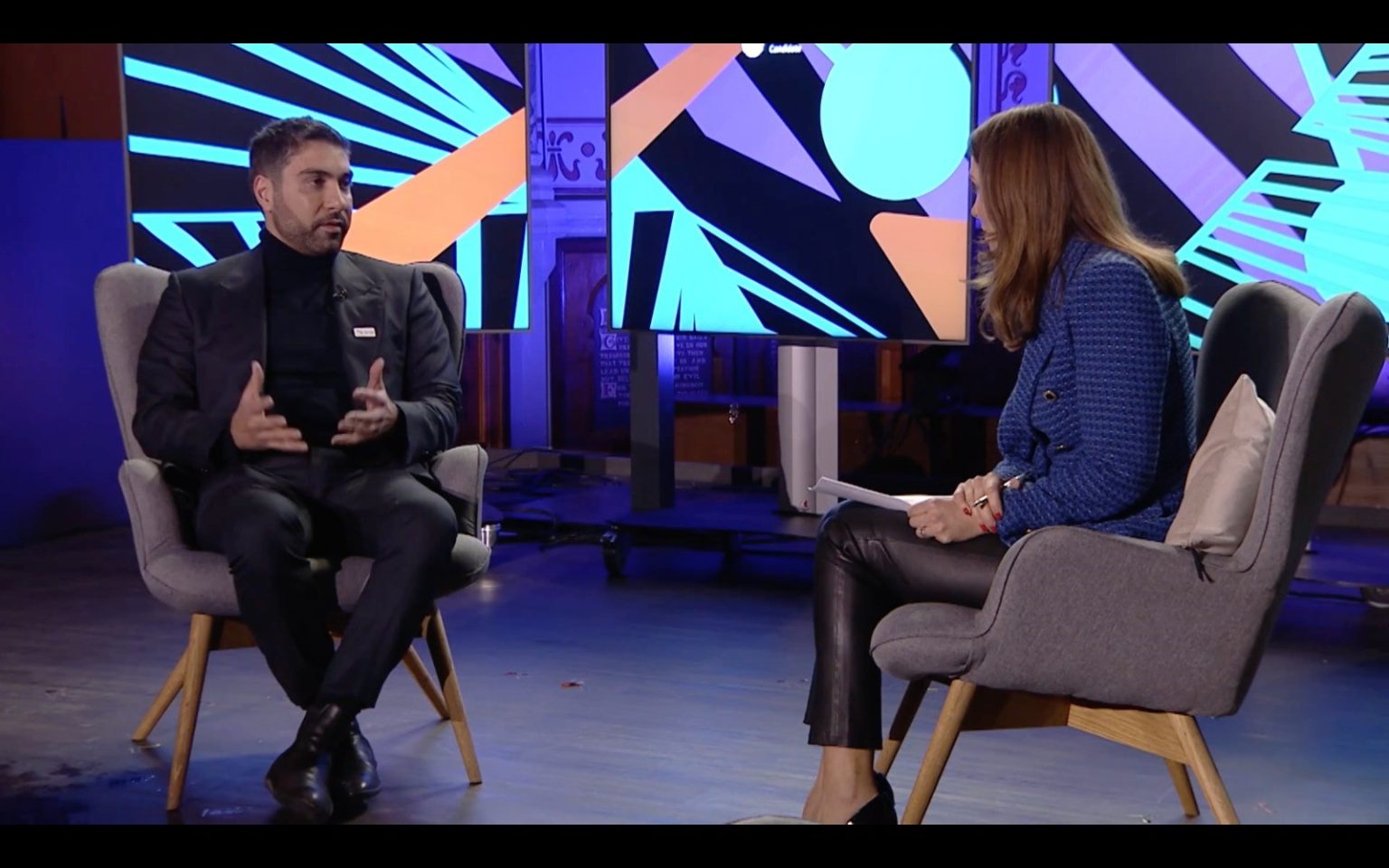Over 30 million people expected on-site in Riyadh, while one billion eyed for virtual interaction on the Metaverse
Davos-Switzerland– Saudi Arabia’s bid for Expo 2030 is not a one-off investment, explained the head of the Royal Commission for Riyadh City, HE Fahd Al-Rasheed, it would rather be one “in the future of our citizens, resident and visitors.”
“We’re thinking about the legacy of the site itself and how it can be used. It cannot be just built and then everybody packs their bags and leaves. It has to be used beyond us. So, we’re thinking about the design of the buildings and we have that in this site masterplan in a way that we can use them for the future of work, the future of education and re-skilling,” he said.
Speaking at a fireside chat with award-winning broadcaster Emma Crosby at a special event on the Davos promenade on the sidelines of the World Economic Forum’s Annual Meeting, Al-Rasheed highlights that the Expo 2030 infrastructure will come naturally given the work already being done regarding Crown Prince Mohammed bin Salman’s Vision 2030.
His vision, however, for the expo is not solely in the look and feel of the site, but rather in its legacy.
“Our legacy from Expo 2030 is not going to be a building. It has to be mass engagement, and at a scale never seen before,” he explained.
“It is literally the largest event in the world, and so what we committed to is the following; not only are we going to get 30, 40 million people to the site, which is fantastic… it’s a record. We’re going to get a billion people to interact with it on the Metaverse and we are now translating that vision into reality.”
This virtual expo will cater to those who wouldn’t be able to fly over to the kingdom’s capital, but the chief executive that it will be more than just a virtual tour.
“You’d give a billion persons the opportunity to actually come and see it, and that would be the first win,” he said, “The second win is they would actually come in and do something experiential about water use and energy use, learn something and apply it in their home. That will get you mass impact.”
“And third, maybe even transact, do a job virtually, or meet somebody or a company, get an investment, etc.. So again, it has to be useful to everybody for it to be used.”
Even then, achieving an onsite presence of over 30 million is a feat not yet seen before, with the Dubai Expo 2020 attracting 26 million visitors over the span of 6 months.
“You have to have a great site, great mobility, which we are we are doing already now. And the metro will connect to the site,” he said, “The site is just south of the airport. So it’s it’s basically the gateway into the city of Riyadh. And we are going to have 140,000 rooms and hotel rooms by then anyway. And so the expo will come in naturally.”
Saudi Arabia, of course, is no stranger to hosting millions of visitors, given it being home of the two holy mosques which brings in millions of pilgrims every year for Hajj in Makkah.
However, that is not to say that creating such a complex site will come cheap. A whopping $8 billion of investment from the kingdom is going into making these plans a reality.
“So, it’s a very large investment. We believe that this investment is totally justified. We have a return on investment target as well for it. We have a socioeconomic target on jobs created both during the Expo and before and after. And so the government of Saudi Arabia doesn’t just put money into buildings and infrastructure and white elephants,” Al-Rasheed explained, “we actually want a return on investment out of everything that we do.”
That, the chief executive points out, is why the theme of Riyadh’s Expo is ‘the Foresight of Tomorrow.’
“It means that we have to take responsibility for our future, whether we are countries, companies or individuals. We have to project the next two, three decades and look at the opportunities that it’s going to avail and the challenges and tackle them. We need to stare them right in the face,” he said.
Within this theme lies three sub themes: A Different Tomorrow, Climate Action, and Prosperity for All.
To paint a picture of the first sub theme, Al-Rasheed gave the example of how robotics can reformat a 200-employee factory into one that only needs 3 employees.
“The plant is more productive, but what happens to 197 employees that you just basically moved out of a job? You have to think about re-skilling. So by confronting the problem, I immediately thought about what I need to do in order to manage from a socio economic perspective.”
“You have the same thing on the second subtheme, which is climate action. What do we need to do? Not just as countries meeting and suits, etc. talking about what the future would look like, but what do I as an individual contribute? How do I use water differently, energy differently? What is my role?”.
And similarly with the third subtheme, “How can we provide opportunity for everyone? They may not take it, but we have to provide it.”
The capital has already begun working on climate action and sustainability, with over $70 billion invested in such projects.
“We said we cannot announce a strategy of hypergrowth without having a sustainability commitment. So last year we actually announced the real sustainability strategy,” Al-Rasheed said.
“We love our environment, we love our city, and we have a commitment to the world. So we will change all our systems, we will change all our plans. We will make 30 percent of our cars, electric vehicles by 2030 and 50 percent renewable energy sources by 2030.”
The fireside chat was attended by a large number of WEF delegates, business executives, journalists and investors.




